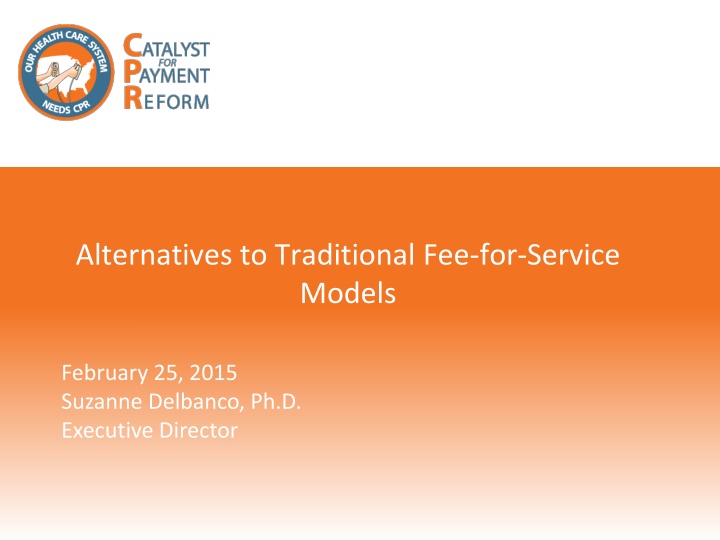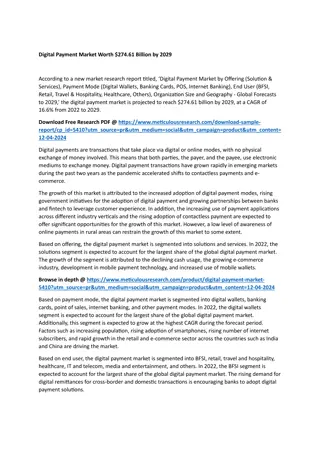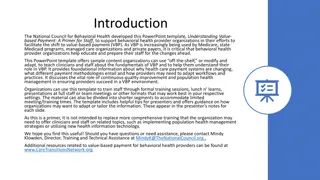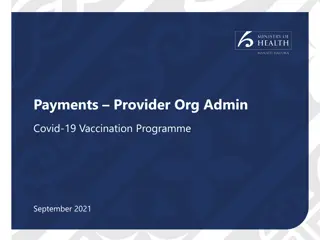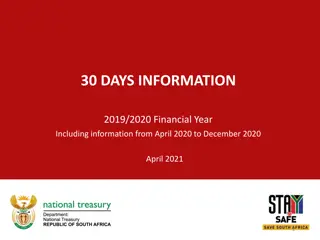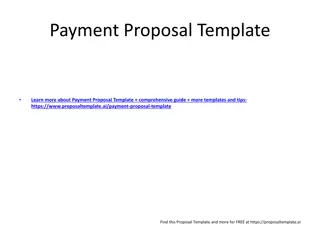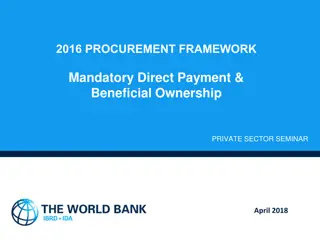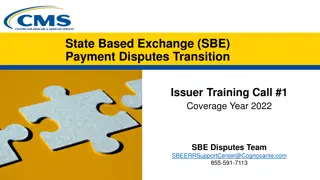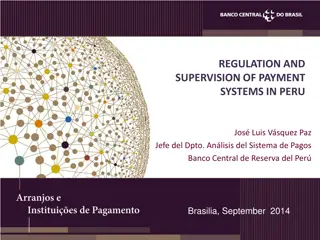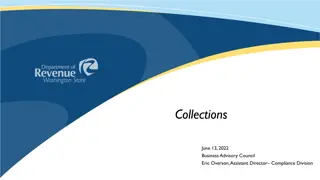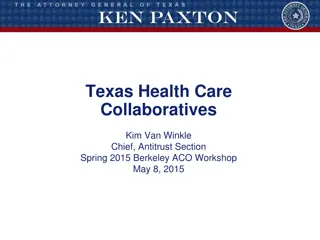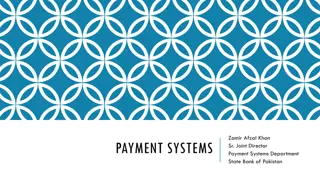Challenges and Opportunities in Healthcare Payment Models
This content discusses alternatives to traditional fee-for-service models in healthcare, emphasizing the need for payment reform to address issues such as variation in quality, safety, prices, and payments. It highlights the importance of evolving payment models to improve value, reduce costs, and enhance accountability in healthcare delivery.
Download Presentation

Please find below an Image/Link to download the presentation.
The content on the website is provided AS IS for your information and personal use only. It may not be sold, licensed, or shared on other websites without obtaining consent from the author.If you encounter any issues during the download, it is possible that the publisher has removed the file from their server.
You are allowed to download the files provided on this website for personal or commercial use, subject to the condition that they are used lawfully. All files are the property of their respective owners.
The content on the website is provided AS IS for your information and personal use only. It may not be sold, licensed, or shared on other websites without obtaining consent from the author.
E N D
Presentation Transcript
Alternatives to Traditional Fee-for-Service Models February 25, 2015 Suzanne Delbanco, Ph.D. Executive Director
Who We Are and What We Do Shared Agenda Payments designed to cut waste or reflect performance Leverage purchasers and create alignment Health plan sourcing, contracting, management and user groups Alignment with public sector Implement Innovations Price transparency Reference and value pricing Maternity payment reform Pilots on high-impact areas Enhance provider competition www.catalyzepaymentreform.org February 25, 2015 1
The Challenges to High Value: Variation in Quality and Safety Huge quality variation To Err is Human, 1999: 44,000- 98,000 deaths per year McGlynn et al, 2003: Patients only get recommended care 55% of the time www.catalyzepaymentreform.org February 25, 2015 2
The Challenges to High Value: Variation in Prices and Payments Prices in the U.S. can vary as much as 700% *Source: Mathematica Policy Research www.catalyzepaymentreform.org February 25, 2015 3
Time to Reform Payment & Delivery Today s approach to payment allows for poor value; tweaks and reforms may help to improve quality and reduce costs Health reform included several Game Changers and a focus on specific models is there Irrational exuberance? We still know very little about what works but we know there is no one-size-fits-all model Most of the time our payments are fee-for service and we pay regardless of quality or outcomes and there are aspects of care they we don t pay for at all though we should Must we start from scratch or can we build on what we have? www.catalyzepaymentreform.org February 25, 2015 4
Payment Model Evolution BASE PAYMENT MODELS Fee For Service Bundled Payment Global Payment Episode Case Rate Fee Per Diem Partial Capitation Full Charges DRG Schedule Capitation Increasing Accountability, Risk, Provider Collaboration, Resistance, and Complexity PERFORMANCE-BASED PAYMENT OR PAYMENT DESIGNED TO CUT WASTE (financial upside & downside depends on quality, efficiency, cost, etc.) www.catalyzepaymentreform.org February 25, 2015 5
Upside, Downside, Two-Sided Risk Type Upside only for providers Examples Physicians Primary Care Medical Home/payment for care coordination or payments for other non-visit functions Payment for shared decision making Payment for nontraditional visits (e.g. e-visits) Hospital-physician gainsharing Pay for Performance Shared savings Hospitals Pay for Performance Shared savings Hospital penalties (e.g. readmissions, Hospital Acquired Conditions, never events, warranties, Length of Stay) Downside only for providers Two-sided risk (both upside and downside) Bundled payment Global payment/capitation Shared-risk in Accountable Care Organization environment Most payment reforms built on a fee-for-service chassis www.catalyzepaymentreform.org February 25, 2015 6
2014 National Scorecard Results 40% of commercial in-network payments are value-oriented; 29% jump from 2013 when it was 11% 53% of the value-oriented payment is considered at-risk 38% of payment to hospitals is value- oriented 10% of outpatient specialist and 24% of PCP payment is value-oriented Respondents may be larger than average health plans in the U.S. and include HMOs Scorecard results not statistically reliable, possibly biased upward as survey is voluntary and self-reported www.catalyzepaymentreform.org February 25, 2015 7
2014 National Scorecard Benchmark Metric Results www.catalyzepaymentreform.org February 25, 2015 8
Goals Set by HHS in 2015 Source: http://www.cms.gov/Newsroom/MediaReleaseDatabase/Fact-sheets/2015-Fact-sheets-items/2015-01-26-3.html www.catalyzepaymentreform.org February 25, 2015 9
How to Define Success Are we going to hit our target but miss the bull s-eye? CURRENT FUTURE We are measuring use of value- oriented payment methods. What happens if we get to 60%, 70%, or 80% by 2020 but value hasn t improved? We need to build an evidence base of what works in what context We need to get to a preponderance of payment flowing through methods proven to produce value www.catalyzepaymentreform.org www.catalyzepaymentreform.org February 25, 2015 10
Contact Suzanne Delbanco, Ph.D., Executive Director sdelbanco@catalyzepaymentreform.org 510-435-2364 www.catalyzepaymentreform.org February 25, 2015 11
